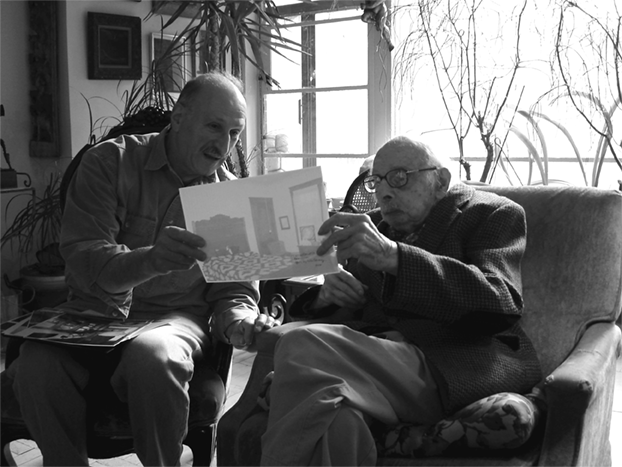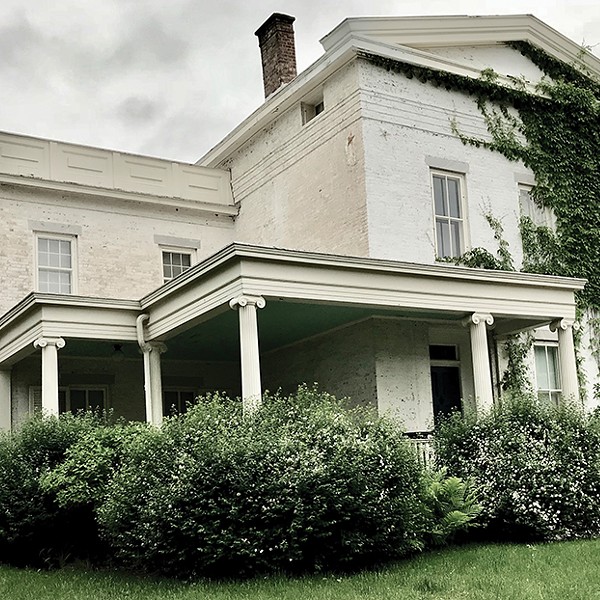Veteran filmmaker Tobe Carey is perhaps best known for his documentary Deep Water, a clear-eyed but lyrically plaintive indictment of the human toll exacted by the 1914 construction of the Ashokan Reservoir, which is located near his Glenford home. Through his production company, Willow Mixed Media, Carey usually chases down a subject to amplify it cinematically. But for his latest film, Stanley’s House, which screens at The Arts Society of Kingston on November 14, the material clearly found him.
Call it beshert (Hebrew for “destiny”), but the facts are these: In 2003, a friend sent Carey a New Yorker article about the metropolitan water supply. Carey began skimming an adjoining profile of former United States Poet Laureate Stanley Kunitz, noting that the acclaimed man of letters had been raised, like himself, in Worcester, Massachusetts; specifically, in a 1918 triple-decker at 4 Woodford Street. The filmmaker’s heart leaped: He and Kunitz had shared a home, three decades apart.
“It was all a revelation to me,” Carey says. The information nagged at him for a year, prompting bittersweet memories of a rambunctious childhood in a long-disappeared Jewish neighborhood. Carey finally telephoned Kunitz to discuss his vision for a film about the old neighborhood. Extremely frail in his 99th year, Kunitz listened quietly. When he did speak, Carey recalled, his speech was halting and he repeated himself at times. “But he encouraged me to go ahead,” he said, “so I started researching.”
Stanley’s House is more than an exploration of parallel lives lived in the same house. Shooting in digital video, Carey has created a heartfelt meditation on how place forms the sensibility of an artist.
Carey encountered great resonance and recognition as he delved into the poet’s Worcester life and the verses they inspired, whether Kunitz had immortalized the local nickelodeon movie house, the ballpark, or the nearby Worcester Academy. “I was surprised by the common experience that I felt through some of his poems,” he recalls. “Even though by the time I lived there, the neighborhood had changed greatly.”
Extensive footage of Kunitz—who died in 2006 at 100—captures the gray-haired sage in large glasses at public readings, looking like a small, wise turtle. Carey creates montages of vintage images to illustrate these readings, ultimately exhuming a lost world through photographs, postcards, and home movies. In addition to his own voiceover memories, Carey enlists his relatives, a Kunitz scholar, and the couple who bought the house in 1979 and lifted linoleum and layers of paint to restore its original look. (It was this reborn house that Kunitz visited in 1997 during a tearful moment included here.)
While unabashedly sentimental, Stanley’s House is also harrowing. As Carey delved into Kunitz’s life, he unearthed several heartaches, chiefly the suicide of the poet’s father, Solomon, six months before Kunitz was born. The man’s palpable absence, and the mother’s lifelong refusal to discuss him, haunt several of Kunitz’s verses. Carey was puzzled, however, to find a dearth of biographical information about Kunitz’s sisters. The poet claimed they both died young, and elegized them in a poem, but there is no evidence of the women in his collected papers at Princeton University. “The main unknown for me in this story,” Carey says, “is what really happened to his sisters.”
Stanley’s House screens at The Arts Society of Kingston on Wednesday, November 14, at 7pm. Admission $5. (845) 338-0331; www.askforarts.org.

















